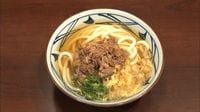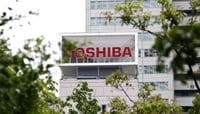
Amid calls for measures to tackle the growing risk of food supply shortage intensified by the impact of global population increase and climate change, biogenetic crops are on the rise primarily in the United States and South America. But Japanese seed companies at large are not yet keen about developing genetically modified products.
Hiroshi Hosoi, the senior executive director of Kaneko Seeds, a leading seed wholesaler in Japan, points out the Japanese consumers’ strong sense of resistance toward GMO food products as the main reason for the domestic players’ overall lack of interest in pursuing this area of development.
“Genetic recombination is not widely accepted by the general public in this country. We still have a large risk of being received negatively by the consumers if we make an advance into this field of business,” he explains.
“It’s too costly,” bluntly says Tsutomu Kagami, the executive managing director of the largest domestic seed development company, Sakata Seed.
“To commercialize genetically modified products, we need to conduct numerous tests and researches for each breed, based on rigid requirements that tend to vary with regions and countries. Doing all that for each market we intend to sell those products becomes too much of a burden, cost-wise.”
According to the Ministry of Agriculture, Forestry and Fisheries (MAFF), “SUNTORY blue rose APPLAUSE” is the only genetically engineered commercial product developed and marketed in Japan at present.
But even without relying on this technology, Japanese seed companies are steadily expanding their business.
Sakata Seed, for instance, is currently selling its products to approximately 170 countries worldwide. In May 2015, its revenue from overseas business has grown into more than half of its total proceeds.
Why Asians choose hybrid seeds
Both Sakata Seed and Kaneko Seeds are enjoying particularly high sales growth in the Asian markets like China and India. Sakata Seed's Kagami sees that this trend is attributable to “increase of population and the traditional custom of eating vegetables rooted in these regions.”
Another favorable trend is that consumers are being exposed to more opportunities to eat new types of vegetables due to the westernization of dietary culture and diversification of food choices.
To cope with the inevitable shrinkage of Japanese seed market led by the decrease of domestic farmers and the overall population, Japanese seed companies are finding their ways to expand their business out of the country.
These companies are generally focused on the production of breeds called “F1 (filial 1)” hybrids, which have specific quality properties. Some ensure good taste or good appearance, while others grow faster, more abundantly or more resistant against specific diseases, or get ripe at the same period to facilitate the picking process.
In addition, “F1 hybrids produced in Japan are highly adaptable to different environments since they have been developed to withstand the tough climatic conditions in this country, ranging from the rainy season, typhoons, large temperature differences, to high humidity,” boasts Hiroshi Sakata, president of Sakata Seeds.
Successful plantations around the world have their own traditional breeds that have adapted and taken root in their soils. But using F1 hybrids can provide various added values to help make their agricultural business more profitable.
For example, using F1 hybrids that get ripe at around the same time will lead to cost savings since the planters will be able to pick them all at once in a relatively short period that can be scheduled ahead. F1 hybrids that have been developed to grow abundantly will enhance the productivity and crop yield. Those that are designed to ensure good taste or good appearance will enable the farmers to supply high-quality products.
A notable characteristic of F1, however, is that it is not fit for use as the source of perennial crop, because the seeds taken from F1 parent plants may not inherit the same quality properties due to the principles of genetics. What this means is that F1 seeds need to be purchased every year. But Sakata emphasizes, “all the various cost-effective advantages that F1 offers easily surpass the burden of this yearly running cost.”
Another competitive strength of Japanese seed companies is that they have accurate knowledge of the subtle differences in market needs existing between each region or country.
In case of Sakata Seed, its global production bases established in 20 countries are, in principle, run by local managers. In fact, two-thirds of its entire group headcount totaling around 2,000 are foreign employees.
How is F1 developed?
The development of F1 is not an easy process. It takes more or less 10 years to confirm that the seed grows steadily with the expected quality properties it has been designed to possess.
To achieve this stability, the developers have to repeat the hybridization process that sometime requires hand-pollination where the stamens are removed by hand to increase the probability of targeted parent strain cross-pollinating with another targeted parent strain, or the use of parent strains that do not have stamens arising from natural mutation.
The developers control the mutation of the seeds artificially by exposing them to radiation. To increase the number of seeds that have the same properties, they also sometime use carbon dioxide to induce the parent plants to cross-pollinate with their own pollens which they normally do not.
The competition between the seeding companies is also intensifying. They are all working aggressively to develop their own breeds that could serve as their differentiators.
One important theme common to them all is how they can shorten the development period. Recent solutions include the use of DNA markers to distinguish the strains that possess the specific targeted properties beforehand, and the cultivation technology to increase the number of parent strains.
Sakata Seed is no exception. It formed a capital tie-up with a Dutch venture company specializing in DNA marker and launched a joint research in 2014.
Private companies are not the only ones devoting their efforts in the development of new technologies. According to MAFF, Iwate University has developed a method to significantly shorten the period required for apple seeds to flower.
While it normally took five to 12 years for these buds to bloom, the researchers in this university succeeded in making them blossom within a year by infecting the apple seeds with innocuous virus injected with genes that accelerate the blossoming process.
Looking around the world, “the demand for non-genetically engineered products is strong, and may perhaps be even more strongly-rooted than the biogenetic counterparts,” says Kaneko Seeds director, Hideaki Hanzawa.
And the Japanese companies know that the real nature of their competition against the global majors that overpower them with overwhelming management resources is to make the best use of their ingenuity to play a winning game.
(This article appears in the September 5th issue of the Weekly Toyo Keizai)



